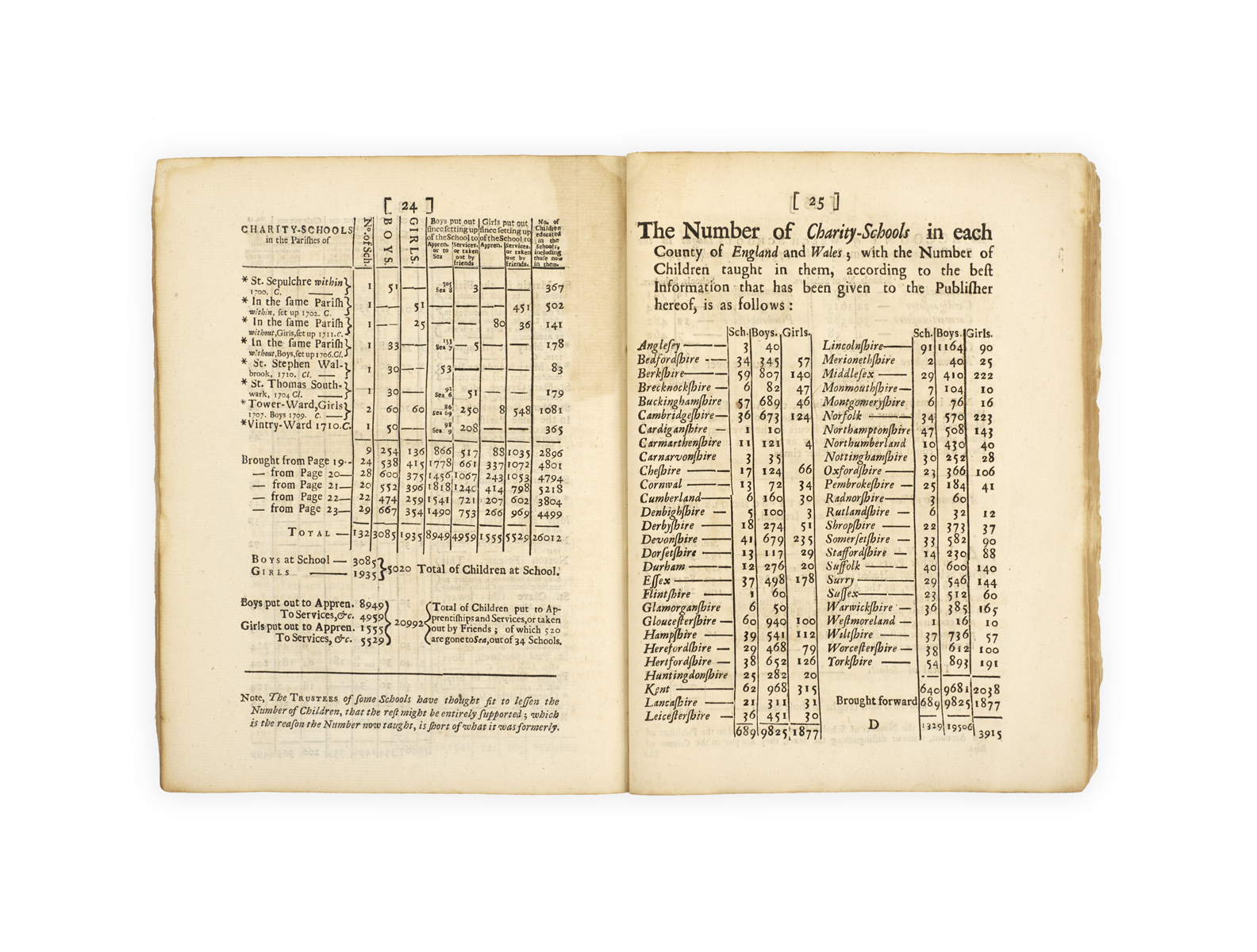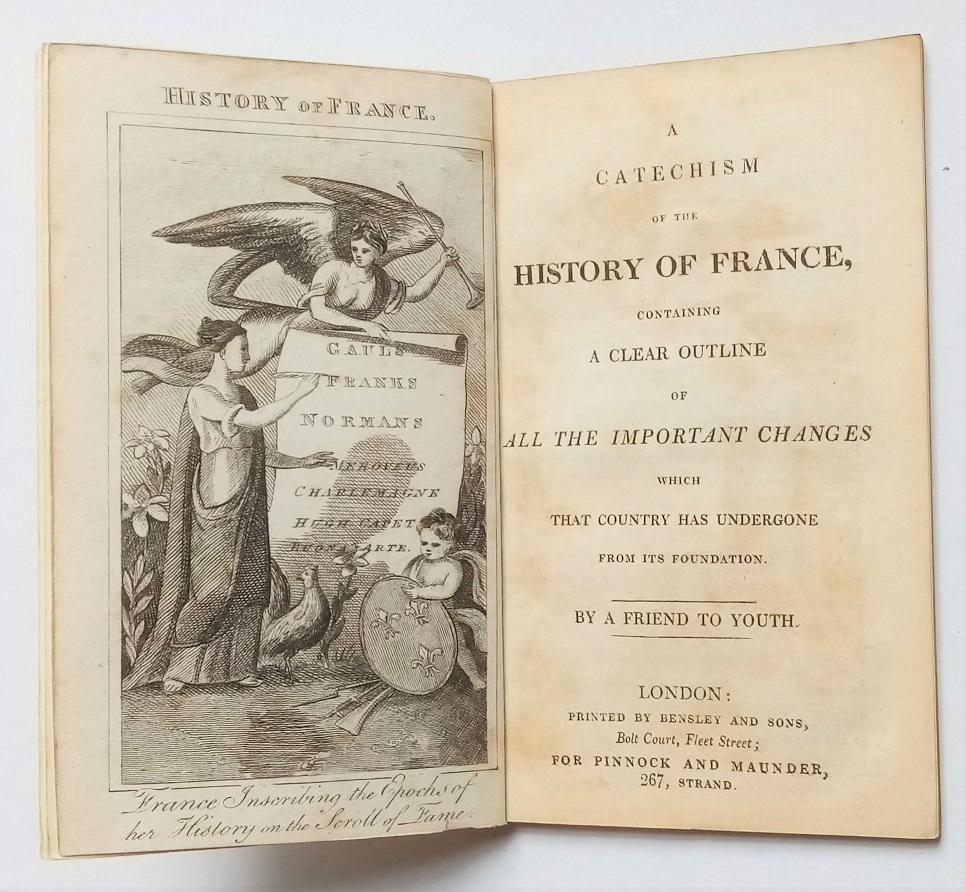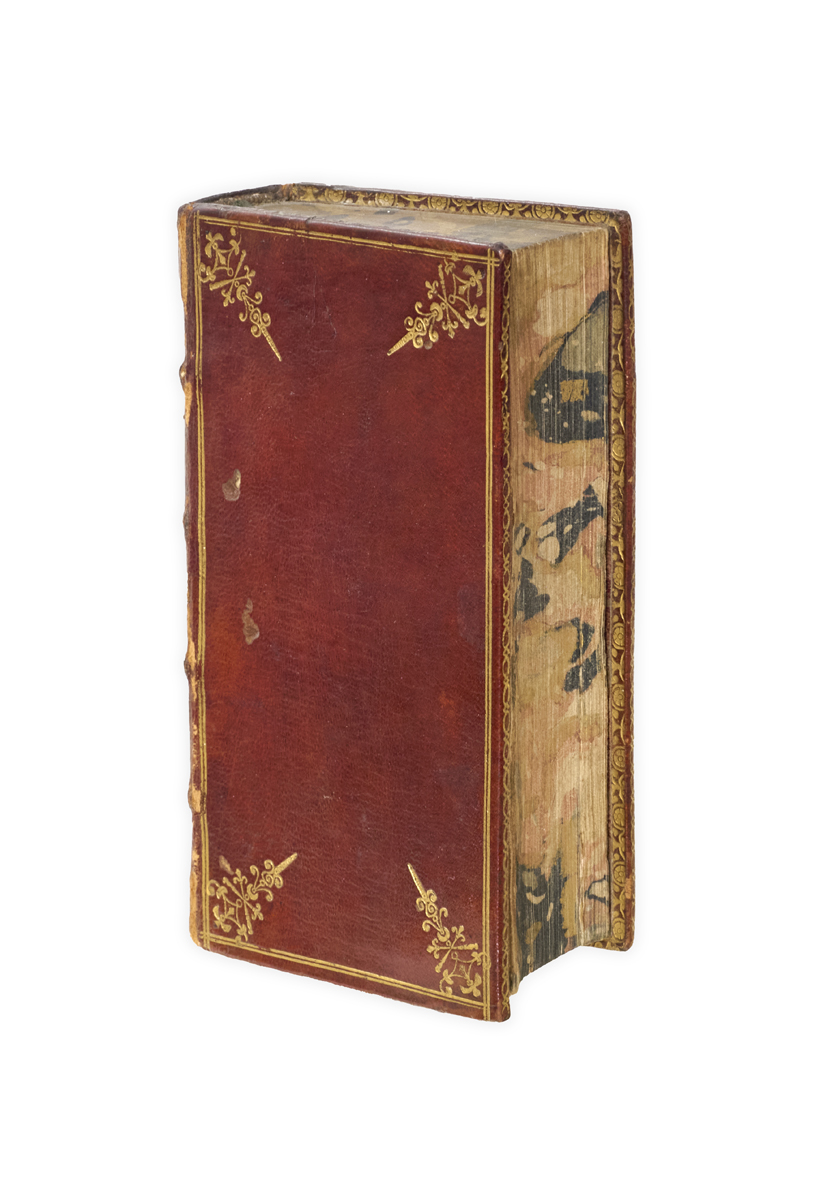
CHARITY SCHOOLS
MADDOX, Isaac.
A Sermon preach’d in the Parish-Church of Christ-Church, London; on Thursday April the 30th, 1741 being the Time of the yearly Meeting of the Children educated in the Charity-Schools, in and about the Cities of London and Westminster ... To which is annexed, an Account of the Origin and Designs of the Society for promoting Christian Knowledge.
London, M. Downing, 1741.
Two parts in one vol., 4to, pp. 37, [1 (blank)]; [2], 56, [2]; separate title-page to second part, engraved initials and headpieces; bottom corners of last two quires creased with a few small tears; a good copy stab-stitched in contemporary marbled wrappers; somewhat worn, spine perished.

Added to your basket:
A Sermon preach’d in the Parish-Church of Christ-Church, London; on Thursday April the 30th, 1741 being the Time of the yearly Meeting of the Children educated in the Charity-Schools, in and about the Cities of London and Westminster ... To which is annexed, an Account of the Origin and Designs of the Society for promoting Christian Knowledge.
First edition, containing the often-lacking second part of the work, providing a tabular account of the charity schools in and around London and Westminster in 1741.
Arranged alphabetically by parish, this gives the date of the establishment of each school, the number of boys and girls in each, and gives statistics for those subsequently apprenticed, sent to sea, or put into service. Isaac Maddox (1697–1759), who became bishop of Worcester in 1743, ‘was much concerned with the social and physical ills of his age, and was well known as a preacher of charity sermons’ and would later refer to destitute infants as ‘the most pitiable, most helpless, and most innocent part of the human species’ (ODNB).
‘The London charity schools as a whole escaped the difficulties which handicapped the charity school movement elsewhere. The never-failing pride of the City in the schools, the willing compliance of leading ecclesiastics to preach the popular anniversary sermons which untied the purse-strings of the rich, the plentiful supply of ‘qualified’ and experienced teachers, and the easy absorption of boys and girls by the London labor market, put the London schools in a class apart from the schools elsewhere’ (Jones, p. 61).
ESTC T49175. See Jones, The Charity School Movement (1938).

